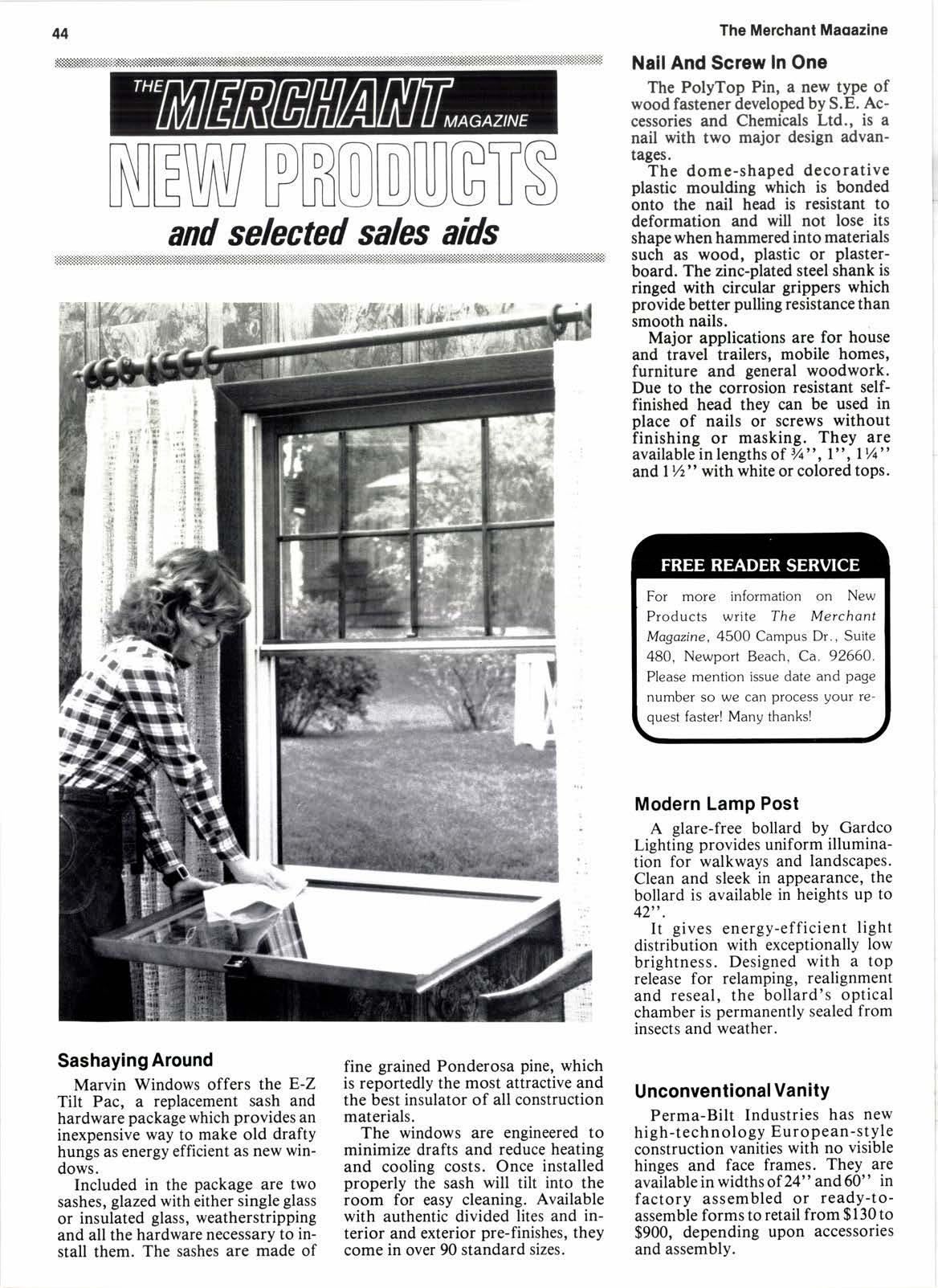
2 minute read
A lumberman's memories of 60 years
By Ed Fountain President Ed Fountain Lumber Co. Los Angeles, Ca.
G:
IX HUNDRED men and amuleltitude of horse drawn carts, pulling, pushing, moving and handling lumber in what seemed an endless stream of activity greeted me on my first day at Consolidated Lumber Company. I had arrived in Los Angeles from Canada for a three week stay with the company, which ended up being thirteen years.
That was 1922, the same year The Merchant Magazine was first published, and I might say I am delighted I was around for the birth. I guess today a yard with that many people would be the biggest anywhere in the country, but in those days there were even larger ones such as Hammond, Patten-Blinn and E.K. Woods. Even at 400 per hour, those were pretty big payrolls.
At that time, Jim Tyson, the president of the Charles Nelson Co., was owner and operator of many large sawmills in Washington and California, large distribution yards in the Bay District and Southern California, and about 35 steamships doing coast wise and inter-coastal lumber shipping. Another dominant man in the industry was Robert Dollar of Dollar Steamship Lines, doing extensive business in the Orient. Charlie Dant of Dant & Russell was big in both the domestic and foreign lumber business.
To a wide eyed youngster from the Canadian backwoods, these were exciting times, and times of great opportunity. There aren't many places on this earth where a young man could start out as a bookkeeper/secretary and rise to sales manager of a large company in such a short period of time, or have the opportunity to start his own business. As the years went by, there were many occasions on which Jack Dionne, the founder of The Merchant, stimulated his audience with new ideas and methods which were making their way into the business. Jack's and The Merchant's success were based upon areal know- ledge of the lumber industry and a sincere desire to serve those in it. Perhaps the most dramatic changes I have seen over the years are in the methods of handling lumber. Mechanization replaced the horse drawn carts with chain drive, solid rubber tire trucks. Lumber carriers took over handling jobs that were formerly done with sheer manpower, and because of long shoremen being unionized, and the high cost of labor
Story at a Glance
at the harbor, rail became the predominant way to ship lumber to the Southern California market. In the early days a piece of lumber was handled approximately l5 times before it was delivered to the customer, while today, it may be three or four. And, isn't it amazing that we are now back to using ocean shipments, because of improved handling methods which have reduced the amount and cost of labor.
Other things which have changed are the grades and species of lumber used. In the old days we had low grade, construction and clear. Since we now have the ability to make a wide variety of grades to fit specific applications, we get better utilization of the lumber and are able to use species which weren't considered acceptable in those early years.
Communications have changed, of course. Originally the phones were bad and the mails were more reliable. We all know what has happened to the post office. But, this has been the trend, the more government involvement in our business, the more difficult it has been to do our job. Sometimes I think it was better stepping in horse manure, than the piles the government has created. It has become more and more difficult, under the heavy restrictions and taxes, to accumulate the capital necessary to grow and expand.
It shows in the attitude of workers too. In those days people were happy to have jobs and be productive, not looking for a way to rip off the government. They saved for their old age and planned for their retirement without one bit of help from the "experts" in Washington. Let's hope we are seeing a change in this direction, too. Maybegoing back is reallygoing forward, like ocean freight. The real pioneers of our industry like Kenneth Smith of Pacific Lumber Company and manager of the LumberAssocia-










